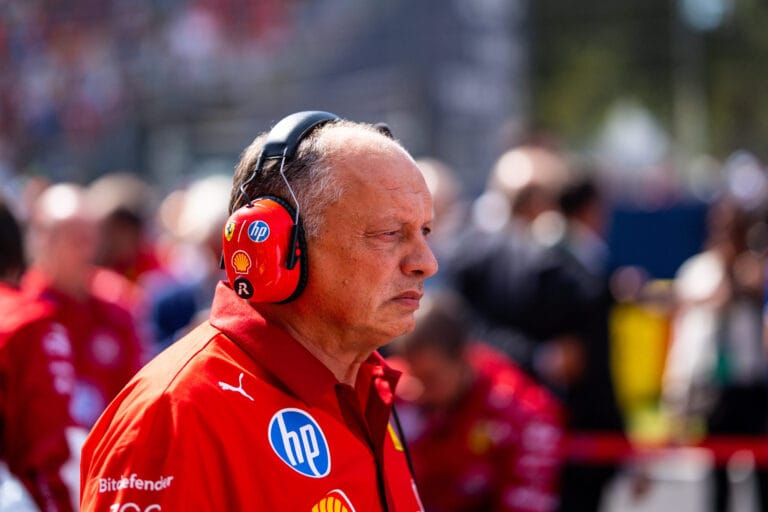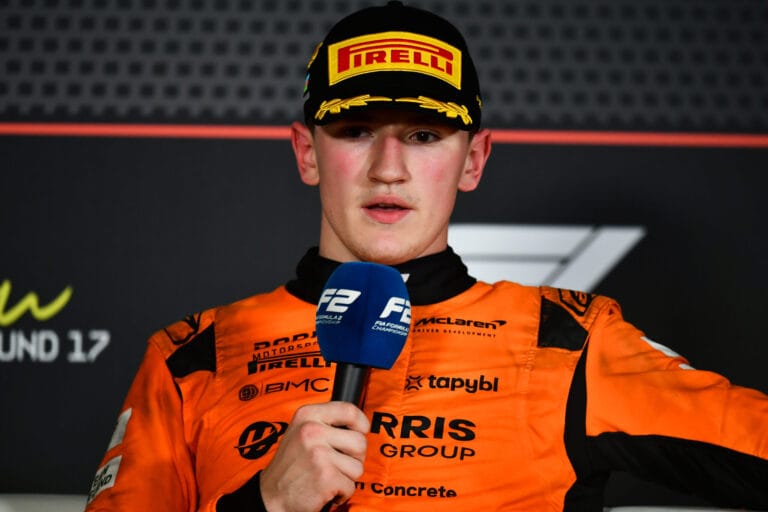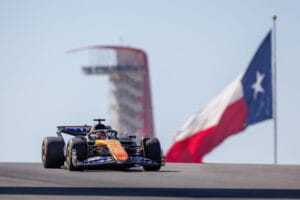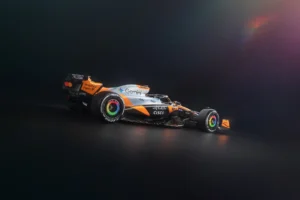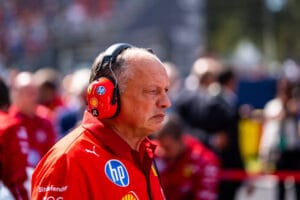Turn 6 at Monaco – better known as the Fairmont hairpin – is the slowest point in the entire Formula 1 calendar. Its dimensions and context make it a complex spot to master, even for Formula 1 drivers moving at 40 or 45 km/h.
A plaque installed in front of the hotel boldly states in English, “Fairmont Hairpin, the most famous turn in the world.” And indeed, every year, the images of the pack hurtling, usually in single file, on the first lap to wrap around the hairpin are a staple of the Formula 1 season. But what does this unique place represent in terms of technicality and driving? A rare challenge, but not necessarily a pleasant one.
A Turn Without Equivalent in Formula 1…
One thing is certain, the curve (which is turn 6) is truly unique in the calendar. The passing speed, up to 46 km/h in qualification (by Charles Leclerc during his pole last year), around 40 km/h in the race, is seen nowhere else. There is even a chasm with all the other turns in the championship since, in qualification, no other curve requires a sure drop below the 60 km/h mark. However, there are a good twenty places throughout the season where Formula 1 operates between 60 and 75 km/h. Including a second one in Monaco, the Rascasse (turn 18).
It’s simply a matter of dimensions and not just the width of the track. With 10 meters of asphalt available, the space is not as limited as it might seem. But the design of the turn is incredibly tighter than any other hairpin in the calendar. If we compare, for example, with Canada’s turn 10 on the Gilles-Villeneuve circuit, which is negotiated around 60 km/h, the size difference is huge in terms of the radius inside the turn and the ideal trajectory (in red in Canada, in blue in Monaco), explaining the speed difference between two curves that might seem similar in the image.
… At the Heart of an Equally Unique Sequence
Just as much as its own design, the Fairmont hairpin also stands out because of its location. Most of the hairpins in the championship are installed at the end of long straight lines offering heavy braking to encourage overtaking attempts.
“Probably the best driver Formula 1 has ever seen”: Lewis Hamilton admires Lewis Hamilton’s career.
Here, it’s the complete opposite, the turn is located in the heart of a sequence that is almost suffocating for Formula 1 cars, which cover 400 consecutive meters at speeds below 150 km/h from the entrance of “Mirabeau haut” to the entrance of the tunnel. In this short span of time, the cars drop below 80 km/h four times! Even in Singapore, another city circuit where the hairpin (turn 13) is preceded by turns, such a sequence is not known, as the F1 cars only drop below 150 km/h once before braking.
In the end, this piece of the Monaco circuit, which accounts for 12% of the distance (400 m out of 3.3 km), represents 22% of the time spent (15 seconds out of 1’10 in qualification) with an average speed of around 95 km/h. This is exactly what a Formula 1 car, a high-speed aerodynamic monster, dislikes. As do the drivers. “It’s a place where you get absolutely no pleasure but you can lose a lot of time,” explains Romain Grosjean, who has participated in the Monaco GP eight times, “at these speeds, you can lose 1 or 2 tenths without even realizing it.”
Can You Overtake? Yes, but…
In 2013 and 2014, Adrian Sutil made a specialty of overtaking at the hairpin in Monaco. The German managed this maneuver four times in less than forty laps over two editions of the Monaco event with two different cars, please (Force India with a Mercedes atmospheric V8 in 2013 and then Sauber with a Ferrari hybrid turbo V6 the following year).
Collisions, lost diamond, and torrents of water… The little stories of the Monaco Grand Prix
Each time with a similar maneuver, a dive inside accompanied by late braking to “block” his opponent and force him to let him go, he notably played Jenson Button (McLaren) and Fernando Alonso (Ferrari) before offering Romain Grosjean (Haas) and Marcus Ericsson (Caterham) twelve months later. Each time with the complicity of the “victims”, especially in 2014, who chose to give way to the German rather than close the door and go to the cardboard.
But since then, Formula 1 cars have grown considerably, both in length (from about 5 m at the time to 5.7 m today) and in width (1.8 m versus 2 m now). Not to mention a few details like a front wing that has developed over time, going from 1.65 m wide until 2016 to 1.80 m from 2016 to 2018 and then 2 m since 2019. Or the weight of the cars going from 642 kg in 2013 to 800 today. These evolutions play a real role in such a cramped place.
“I tell myself it’s Monaco, so anything is possible”: Isack Hadjar facing one of the great myths of Formula 1
The maneuver of Charles Leclerc on Lando Norris in 2019 is therefore an exception. But it was performed on the second lap, at the very beginning of the race, and with a car 57 kg lighter than today. “It’s on the first lap especially that you can try something,” Grosjean points out. “After that, the probability that it will go wrong is very high. Today’s F1 cars are so long and wide that it’s extremely complicated.” The only hope is that the 2026 regulations, which will reduce the maximum wheelbase by 20 cm (and therefore the length of the single-seaters), the width by 10 cm, and the weight by 32 kg, will offer more possibilities to the drivers at this place as early as next year.


